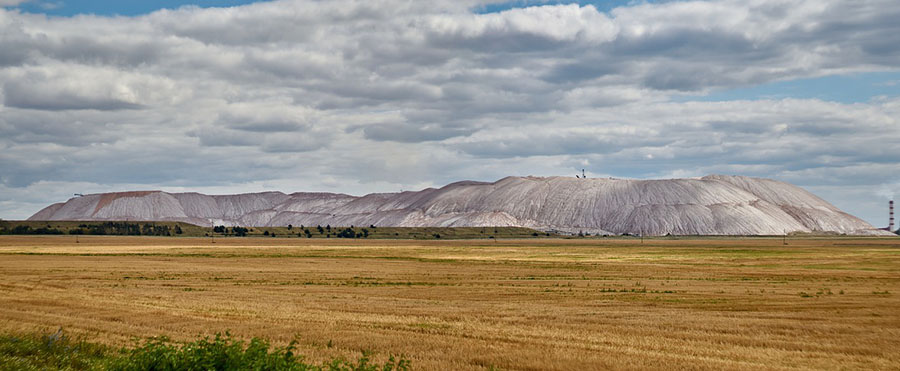
This week, the U.S. received favorable news on the housing market. After four years of dismal performance, housing starts and building permits in September surged, climbing to the highest number since July 2008, according to Bloomberg. As you can see below, new private housing data has been very weak compared to several previous decades.

Homebuilder confidence is also climbing. Bloomberg says the National Association of Home Builders/Wells Fargo builder sentiment index is at its highest level since June 2006. According to BCA Research, the U.S. housing bubble is over as the supply of homes and rental vacancy rates fall.
For several months, Global Resources Fund (PSPFX) co-portfolio managers Evan Smith and Brian Hicks have been watching these housing statistics improve, as they believe a U.S. housing recovery is a significant catalyst for timber and forest stocks held in the fund's portfolio.
People are often surprised when they hear that global resources are actually more than just commodities like oil and copper. In fact, over the past year, we've shifted our emphasis of resources stocks to focus on 10 different sectors. Each of these areas include global companies that are involved in the production, exploration or processing of various commodities which stand to benefit from the world's growing population, urbanization and rising income trends.
To help address the misconceptions, Evan Smith steps in for me today. He has been researching global resources stocks for more than eight years and answers some of our most frequent questions.
What makes up the universe of global resources companies?
At U.S. Global, we look at not only companies involved in producing coal, iron ore and steel, or copper or aluminum, but various types of companies involved in oil. These include refining, exploration and production, and drilling companies. There's also energy infrastructure, such as pipelines and tankers. Other areas are agricultural chemical, such as fertilizers, and companies involved in food and forest and paper products. These are all the essential ingredients in the lives of the billions of people around the planet.
With a fund that is able to invest globally, how do you decide where the best opportunities are?
Before analyzing a particular company, we consider a variety of broad economic factors across developed and emerging countries. We believe government policy is a precursor to change. Therefore we closely track countries' fiscal and monetary policy actions. To determine rising or falling demand of certain natural resources, we look at factors including GDP rates, rising urbanization rates and other demand factors which would affect the use of commodities.
Over the past decade, the
This infrastructure buildout continues today, as China announced an estimated $156 billion in infrastructure approvals in an effort to stimulate a stagnating domestic economy. The projects span subway, highway, port, waterway, airport and energy investments and are scheduled to progress over the next four years.
It's not only China—many other emerging markets are pursuing policies that encourage economic growth and improve the living standards for their residents.
What other areas do you find interesting right now?
We think the agricultural sector offers opportunity today. With 7 billion hungry people around the world, yields will need to increase on arable lands, benefitting certain processing, farming and agricultural companies. Feeding a growing global population means we need better fertilizers, mechanization and seed technologies to increase the production of grains on less arable soil.

Take a look at the USDA’s World Grain Supply today compared to previous decades. The stock-to-use ratio is one way of measuring supply and demand. It compares the "leftovers" to the total use of a commodity. You can see that the world grain stock-to-use ratio is at a low that we haven't seen since the 1970s. In one of its research reports, BCA says that the implication is that the imbalance of supply and demand will "likely get resolved via a reacceleration in grain prices, which will encourage an aggressive planting program." We believe this provides opportunity for global agricultural companies.
How does the fund differ from other commodity investments?
The Global Resources Fund invests in commodity producers rather than a basket of commodity futures such as the Dow Jones-UBS Commodity Index (DJUBS). We believe a well-managed and diversified portfolio of commodity-related stocks can provide significant leverage relative to the underlying commodities over the course of a cycle. The fund's active strategy also provides potentially greater diversification benefits because of its exposure to a broader array of commodities.
Lastly, investors often struggle with the complexity of the key risks of passive futures strategies, but can more easily understand the key value drivers of commodity stocks, such as the direction of a certain commodity and growth in production, reserves or cash flow on a per share basis.
See a previous blog post for more on how these investments differ.
What's the benefit to investors for the fund's diversification across commodities?
Diversification helps investors take advantage of the tremendous growth opportunity in commodities while potentially decreasing the risk, as commodity prices tend to be very cyclically and seasonally volatile from year to year. The fund has historically had a lower correlation to the S&P, which tends to reduce volatility in a portfolio.
Financial Planning has recognized this correlation benefit of resources stocks, naming the Global Resources Fund (PSPFX) as adding the most return among natural resources peers with 10-year returns, when included in a diversified portfolio and rebalanced annually.
And over the past year, our diversified approach has been advantageous for shareholders. As of September 30, 2012, the fund experienced a lower volatility compared to the benchmark Morgan Stanley Commodity Related Index (CRX) and its natural resources peers.
Frank Holmes
Frank Talk
Past performance does not guarantee future results.
Please consider carefully a fund's investment objectives, risks, charges and expenses. For this and other important information, obtain a fund prospectus by visiting www.usfunds.com or by calling 1-800-US-FUNDS (1-800-873-8637). Read it carefully before investing. Distributed by U.S. Global Brokerage, Inc.
Foreign and emerging market investing involves special risks such as currency fluctuation and less public disclosure, as well as economic and political risk. Because the Global Resources Fund concentrates its investments in a specific industry, the fund may be subject to greater risks and fluctuations than a portfolio representing a broader range of industries.
The Morgan Stanley Commodity Related Index (CRX) is an equal-dollar weighted index of 20 stocks involved in commodity related industries such as energy, non-ferrous metals, agriculture, and forest products. The index was developed with a base value of 200 as of March 15, 1996. The Dow Jones UBS Commodity Index is composed of futures contracts on physical commodities, and includes commodities traded on U.S. exchanges, with the exception of aluminum, nickel and zinc, which trade on the London Metal Exchange (LME). The National Association of Home Builders/Wells Fargo builder sentiment index is derived from a monthly survey and gauges builder perceptions of current single-family home sales and sales expectations for the next six months.
Diversification does not protect an investor from market risks and does not assure a profit.


























































